
Esta seção explica a importância de selecionar aço para ferramentas para ajudar nossos clientes a escolher o aço certo para diferentes aplicações de ferramentas.
Primeiro, consulte o artigo em nosso blog que explica “O que é aço ferramenta?." Então, considere como escolher o aço para ferramentas.
Importância da seleção do aço para ferramentas
O primeiro passo na seleção de um aço ferramenta é confirmar sua aplicação pretendida. Por exemplo, uma broca é usada para furar, portanto, precisa ser resistente ao desgaste e a altas temperaturas. Outro exemplo é um punção, usado para estampagem ou corte; consequentemente, o material precisa ser resistente ao desgaste e tenaz (alta tenacidade significa que não quebrará facilmente).
Vamos dividir o aço para ferramentas em seis categorias, de acordo com suas aplicações:
- Corte: Aço resistente ao desgaste e ao calor é necessário para brocas e fresas.
- Cisalhamento e puncionamento: Para punções e moldes, o aço de cisalhamento ou puncionamento deve atender aos requisitos de resistência ao desgaste e tenacidade.
- Moldagem: como moldes de plástico, moldes de forjamento e moldes de aço, devem ser fáceis de processar e podem ser polidos suavemente.
- Alongamento e extrusão: como armações de alumínio, barras de aço trefiladas a frio, resistentes ao desgaste e não fáceis de deformar.
- Laminação: Barra redonda de laminação, placa plana, resistente ao desgaste e ao calor.
- Diversos: martelar, limar e raspar, com necessidades específicas para cada aplicação.
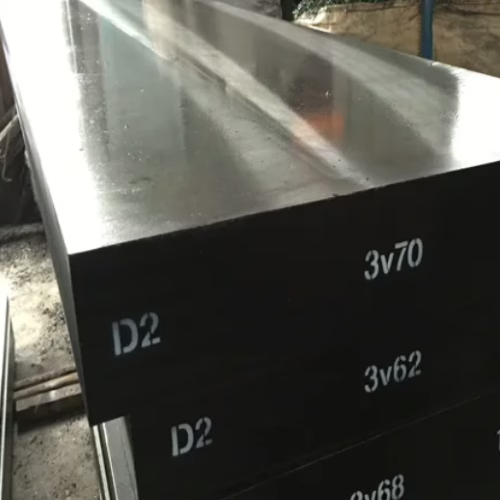
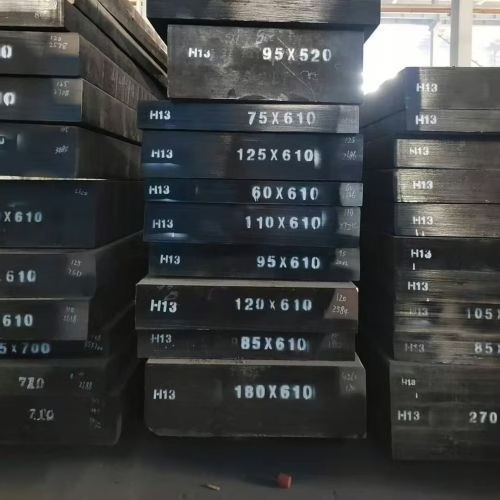
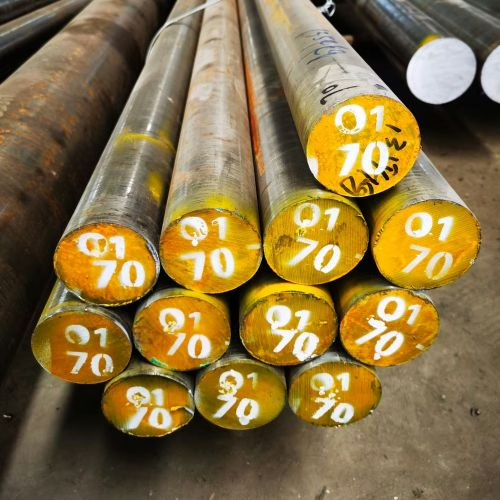
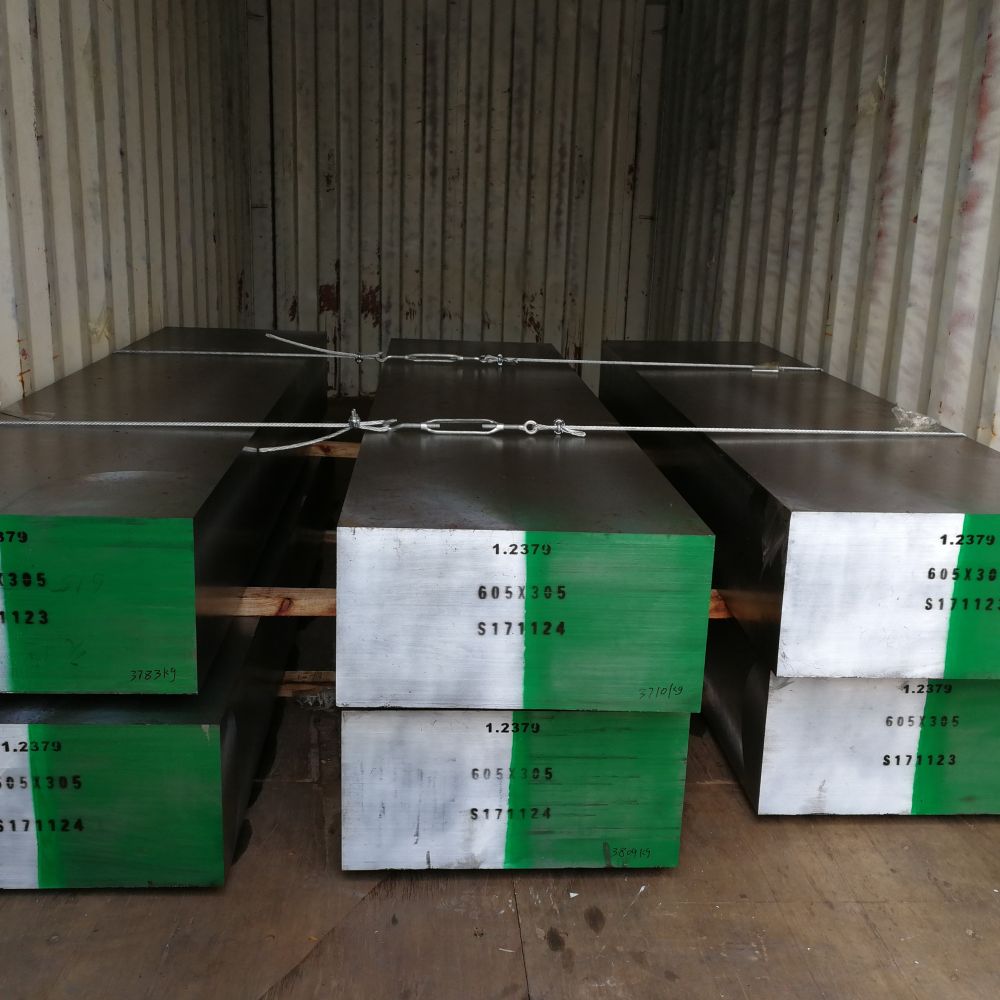
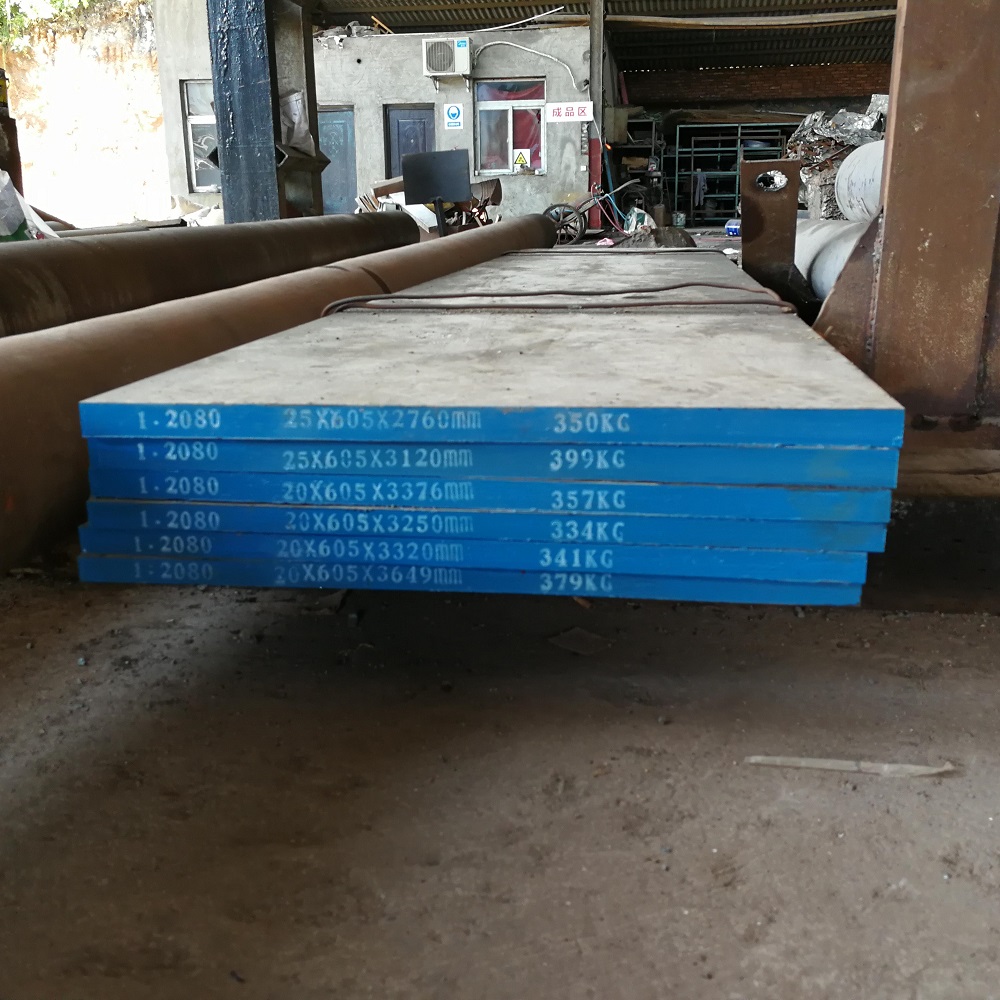
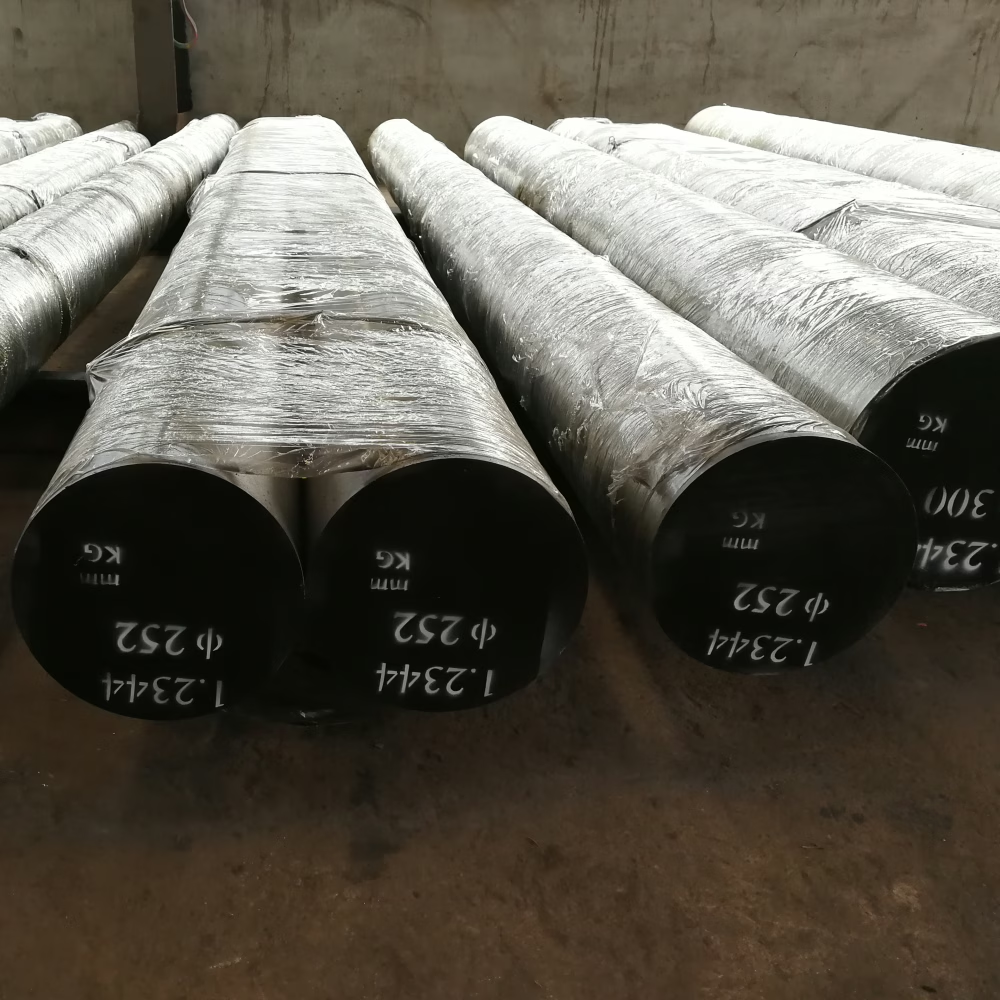
Características de desempenho do aço para ferramentas
Dividimos as propriedades do aço para ferramentas em propriedades primárias e secundárias:
Propriedades primárias
Estas são as principais características do aço:
- Resistência ao Desgaste: Capacidade do aço de resistir ao desgaste. Por exemplo, ferramentas de corte devem permanecer afiadas por um longo período.
- Resistência: O aço resiste à fratura. Por exemplo, o punção precisa suportar o impacto.
- Resistência ao calor: O aço também mantém seu desempenho em altas temperaturas. Por exemplo, brocas de alta velocidade são afetadas pelo calor do atrito.
A dureza também é um ponto muito importante, mas não é uma propriedade da natureza. Ela precisa do tratamento térmico adequado para se ajustar. Quanto maior a dureza, menos deformável ela é, tornando-a adequada para altas pressões.
Propriedades secundárias
Estas são características que afetam o processo de fabricação de ferramentas:
- Usinabilidade: O material pode ser facilmente usinado no formato de ferramenta desejado.
- Moabilidade: Quão facilmente o aço pode ser retificado (polido).
- Polibilidade: se o material pode ser polido suavemente, como moldes de plástico que precisam de uma superfície lisa.
- Segurança no tratamento térmico: O tratamento térmico do aço pode aumentar sua suscetibilidade a rachaduras.
- Distorção no tratamento térmico: O formato do material após o tratamento térmico muda muito.
- Faixa de tratamento térmico: A faixa de temperaturas de tratamento térmico que o aço pode aceitar.
- Disponibilidade: Este material não está prontamente disponível no mercado.
- Preço: o custo não é alto, é claro.
Compensações na seleção de aço para ferramentas
Ao escolher um aço para ferramentas, há uma compensação entre propriedades: aumentar a resistência ao desgaste e ao calor geralmente diminui a tenacidade, enquanto aumentar a tenacidade pode deteriorar a resistência ao desgaste e ao calor.
Por exemplo, um punção que precisa ser resistente ao desgaste pode ser feito de aço A2, mas este não é suficientemente tenaz e é propenso a trincas. Se trocássemos para o aço S7, que tem maior tenacidade e é menos propenso a deformações durante o tratamento térmico, a resistência ao desgaste seria pior do que a do A2.
É por isso que dizemos que nenhum aço é perfeito para todas as necessidades. Dependendo da aplicação, a melhor combinação de propriedades primárias e secundárias é importante.
Primeiro passo na seleção de aços para ferramentas
A tabela a seguir serve como um guia preliminar para a seleção de aço para ferramentas. Simplificando, ela auxilia engenheiros e clientes a escolher sistematicamente o aço para ferramentas mais adequado para cenários de aplicação específicos. Primeiro, determine a função da ferramenta — se é para "Corte", "Cisalhamento" ou "Conformação". Em seguida, examine as condições específicas de trabalho, como se envolve "Cortes leves, baixas velocidades" ou "Cortes pesados, altas velocidades". Por fim, a tabela indica as principais propriedades que o aço para ferramentas selecionado deve possuir nessas condições, juntamente com faixas específicas de desempenho. Por exemplo, "Resistência ao desgaste" deve atingir os graus 4 a 8, enquanto "Tensão" deve atingir os graus 1 a 3. Isso torna o processo de seleção de materiais mais científico e preciso, evitando escolhas incorretas baseadas apenas na experiência. Isso serve como uma ferramenta de referência inestimável, permitindo que os usuários identifiquem rapidamente as especificações de desempenho necessárias para a seleção do aço.
| Estas são as principais características necessárias no aço para ferramentas: | E essas pequenas características podem ser necessárias: | Nestas condições: | Essas propriedades principais(a) devem ser procuradas | |||
| Se a ferramenta: | Resistência ao desgaste | Robustez | Dureza quente | |||
| Cortes | Resistência ao desgaste e resistência ao efeito de amolecimento do calor | Moabilidade e tenacidade | Cortes leves, velocidades lentas | 4-8 | 1-3 | 1-6 |
| Cortes pesados, velocidades rápidas | 7-9 | 1-3 | 8-9 | |||
| Tesouras | Resistência ao desgaste e tenacidade | Segurança no endurecimento e ligeira distorção no endurecimento | Estoque fino, tiragens curtas | 4-6 | 1-7 | (b) |
| Estoque fino, tiragens longas | 6-9 | 1-7 | (b) | |||
| Estoque pesado, tiragens curtas | 2-4 | 7-9 | (b) | |||
| Estoque pesado, tiragens longas | 3-5 | 7-9 | (b) | |||
| Formulários | Resistência ao desgaste | Usinabilidade e tenacidade | Corridas curtas e frias | 4-6 | 1-7 | (b) |
| Corridas longas e frias | 7-9 | 1-4 | (b) | |||
| Corridas curtas e quentes | 3-6 | 6-9 | 5-7 | |||
| Corridas longas e quentes | 4-6 | 6-9 | 7-9 | |||
| Empates | Resistência ao desgaste | Ligeira distorção no endurecimento | Corridas curtas | 4-6 | 1-7 | (b) (b) |
| Corridas longas | 7-9 | 1-4 | ||||
| Extrudados | Resistência ao efeito de amolecimento do calor, tenacidade e resistência ao desgaste | … | Frio | 4-9 | 1-7 | (b) 5-7 |
| Quente | 3-6 | 6-9 | ||||
| Rolos | Resistência ao desgaste | … | Corridas curtas | 4-6 | 1-7 | (b) |
| Corridas longas | 7-9 | 1-4 | (b) | |||
| Batedores | Robustez | Resistência ao desgaste | Corridas curtas | 2-4 | 7-9 | (b) |
Comparador de aço para ferramentas e matrizes
Guia de seleção de aço para ferramentas
| Aplicativo | Em geral | Melhor |
| Bigorna | S5, S7 | |
| Caramanchões | O1, O6, A2, D2 | |
| Ferramentas de bater (frio) | S5 | S7 |
| Ferramentas de ferreiro | S5 | S7 |
| Ferramentas para caldeiraria | S5 | S7 |
| Alicate de corte de parafuso | A2 | S5 |
| Ferramentas chatas | M2 | |
| Morre o freio | 4140 HT | A2 |
| Brochas - metalurgia | M2 | M4 |
| Ferramentas de polimento | A2, D2 | M2 |
| Cinzéis | ||
| Ferreiro | S5 | S7 |
| Lascamento | S5 | S7 |
| Trabalho a frio | S5 | S7 |
| Gravação | S5 | T1 |
| Corte de arquivo | D2 | M2 |
| Mão | S5 | S7 |
| Trabalho a quente | S7 | M2 |
| Mandíbulas de Chuck | S5 | S7 |
| Peças de embreagem | S5 | S7 |
| Pinças | O1 | S5, S7 |
| Rompedores de concreto | S5 | |
| Cortadores | ||
| Ferramentas de formulário | M2 | M4 |
| Fresagem | M2 | |
| Papel | D2 | M2, M4 |
| Cano | S5, S7 | M2 |
| Fio | M2 | M4 |
| Marcenaria | O1 | M2 |
| Ferramentas de corte | ||
| Frio | H13 | M2 |
| Quente | H13, H21 | M2 |
| Morre | ||
| Dobrando | O1, O6 | A2, D2 |
| Blanking (frio) | O1, O6 | A2, D2 |
| Supressão (quente) | H13, S7 | H21 |
| Freio | 4140 HT | A2 |
| Cunhagem | O1 | A2, D2 |
| Cabeça fria | A2, D2 | M2 |
| Fundição sob pressão | H13 | |
| Fundição sob pressão (latão) | H13 | H2 |
| Gravação em relevo | A2 | D2 |
| Extrusão (a frio) | D2 | M2 |
| Extrusão (quente) | ||
| Alumínio | H13 | |
| Cobre e latão | H21 | |
| Forjamento (a quente) | H13, S7 | H21, H43 |
| Formação (frio) | O1 | A2, D2 |
| Formando (quente) | H13, S7 | H21 |
| Pinça (fria) | O1, S7 | A2, D2 |
| Pinça (quente) | S7, H13 | H21 |
| Laminação | A2 | D2, M2 |
| Estampagem (frio) | S7 | D2 |
| Estampagem (quente) | H13, S7 | H21 |
| Rolo de linha | D2 | M2 |
| Aparar (frio) | O1, A2 | D2 |
| Aparar (quente) | S7, H13 | H21 |
| Trefilação | D2 | M4 |
| Brocas | ||
| Plano, pá | M2 | |
| Torção | M2 | |
| Buchas de perfuração | S5 | |
| Rolos de acionamento | D2 | D7 |
| Blocos fictícios | ||
| Extrusão a quente | H13 | H21 |
| Fresas de topo | M2 | |
| Medidores | A2 | D2 |
| Fogões | ||
| Corte | M2 | T1 |
| Mestre | S7 | A2, D2 |
| Facas | ||
| Picador | A2, A8 | D2, M2 |
| Papel | D2 | M2 |
| Rotativo | A8 | D2 |
| Cisalhamento (frio) | A2, D2 | S7 |
| Cisalhamento (quente) | H13, S7 | H21 |
| Marcenaria | A2, D2 | M2, 440 Aço Inoxidável |
| Torno | ||
| Centros | A2 | D2 |
| Ferramentas | M2 | M42 |
| Mandris | ||
| Trabalho a frio | O1, A2 | D2 |
| Extrusão a quente | H13, S7 | H21 |
| Moldes | ||
| Plástico | A2, H13, 420, S7 | |
| Ferramentas de plaina | M2 | |
| Medidores de plugue | A2 | D2 |
| Ferramentas pneumáticas | S5 | S7 |
| Punções | ||
| Centro | S5 | S7 |
| Extrusão a frio | A2 | D2, M2 |
| Cabeça fria | S7, A2, D2, M2 | D2, M2 |
| Empate | A2, D2, M2 | |
| Trabalho a quente | S7, H13, M2 | |
| Piercing | A2, S7 | |
| Aparar | S5, S7 | A2, D2 |
| Alargadores | M2 | |
| Rolos | ||
| Formando | O1, A2 | D2, D7 |
| Costura | O1, A2 | D2, D7 |
| Pontas de chave de fenda | S5 | |
| Ferramentas de modelagem | M2 | |
| Lâminas de tesoura | ||
| Frio (medidor de luz) | A2 | D2 |
| Frio (calibre pesado) | S5 | S7 |
| Quente | S7, A8 | |
| Selos | ||
| Frio | S5 | |
| Quente | S7 | |
| Torneiras | O1 | M2 |
Exemplo de seleção de aço para ferramentas
Ao estampar chapas de aço de 3/8 de polegada de espessura com aço A2, o problema de fissuras nas bordas pode decorrer da sua baixa tenacidade. Embora o aço A2 apresente boa resistência ao desgaste, demonstra fragilidade quando submetido a impactos. Para solucionar esse problema, considere a seleção de um aço mais dúctil. L6, A8, S1Aços S5, S5 ou S7. O aço S7 pode ser superior devido à sua segurança no tratamento térmico e baixa distorção. No entanto, a desvantagem é que o aço S7 tem menor resistência ao desgaste em comparação com o aço A2, o que pode levar a um desgaste mais rápido. É um nome complicado. Portanto, na prática, nenhum aço 100% é perfeitamente adequado para todas as situações e deve ser selecionado com base na aplicação.
Outras considerações
Além de selecionar o aço para ferramentas, é importante considerar se o projeto da ferramenta é adequado. Deixe-me dar um exemplo para verificar se o formato do punção é adequado. O processo de tratamento térmico está correto e as temperaturas e os tempos afetam o desempenho? Se a ferramenta é usada e mantida corretamente, e se recebe manutenção adequada. Além do aço para ferramentas, considere materiais como aços martensíticos envelhecidos, carbonetos com juntas de aço e ligas de cobre-berílio. A simples substituição do aço não resolverá necessariamente o problema; um exame e uma análise completos são necessários.
Para resumir
A seleção do aço para ferramentas visa atingir o menor custo por produto ou o menor número de problemas de produção com o aço para ferramentas mais adequado. No entanto, o aço para ferramentas não é uma panaceia e não se pode esperar que nunca se quebre. Ao selecionar o aço, é preciso considerar uma combinação de uso, desempenho e custo, e a comunicação completa com o fornecedor do aço, o fabricante da ferramenta e o especialista em tratamento térmico é muito importante. Entre em contato conosco. Nossa empresa oferece os aços para ferramentas mais comuns do mercado. Para mais informações, clique em aços para ferramentas.
